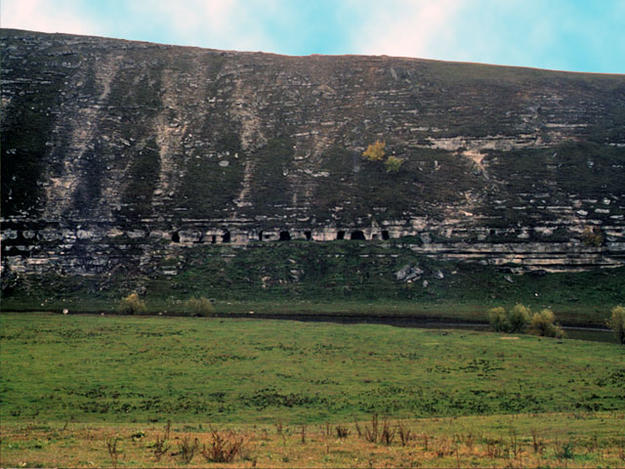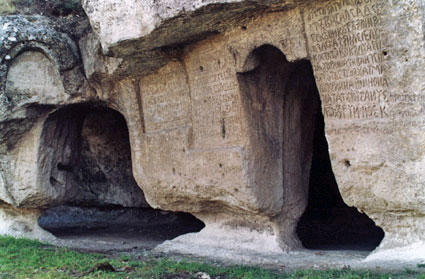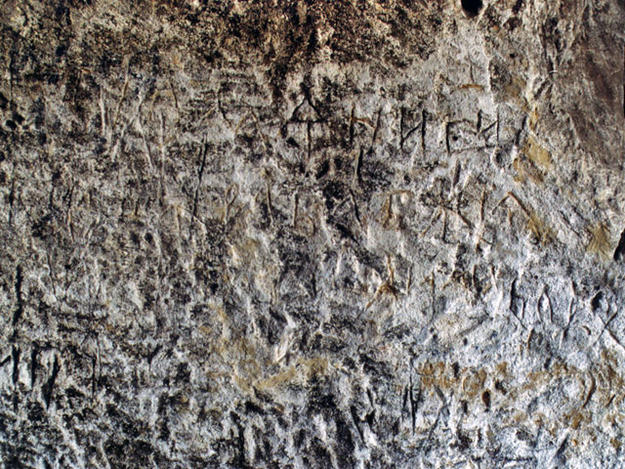Barbary-Bosia Monastery Complex
2002 World Monuments Watch
Incorporating portions of four earlier Christian and pre-Christian sanctuaries, the elaborately decorated surfaces of the Bosie Church and accompanying monks’ cells were carved from a cave complex above the Raut River between 1665 and 1675. The names of the church founders, as well as those of craftsmen who carved it from the rock, remain inscribed on the main entrance to the church, which is set deep into the limestone and marl cliffs only meters above the river. The Barbary-Bosia complex is part of the former Soviet republic’s larger Orheiul Vechi National Historical Preserve, which contains archaeological and architectural remains from the Paleolithic to Late Medieval periods. The monastery is one of the last building projects completed before the abandonment of the surrounding settlement in the eighteenth century. The underground springs that created the caves from which the monastery complex was hewn continue to erode its carved stone surfaces. Silt washing into the grottoes also abrades the decorated rock, and will eventually block the monastery’s entrances if it is not periodically removed. Additional factors damaging interior and exterior surfaces include the yearly freeze-thaw cycle, as well as a significant acid rain situation at the site created by large-scale smelting and refining operations and concrete production in nearby industrial zones. Over a third of the complex’s features are in serious condition and require immediate conservation, but the difficult economic conditions in Moldova following the dissolution of the Soviet Union, and the accompanying departure of skilled conservators from the country, have prevented a comprehensive conservation and management plan from being implemented.
Since the Watch
In 2007, the Orheiul Vechi area, within which the rock-cut monastery complex is located, was added to Moldova's Tentative World Heritage List. January 2011



